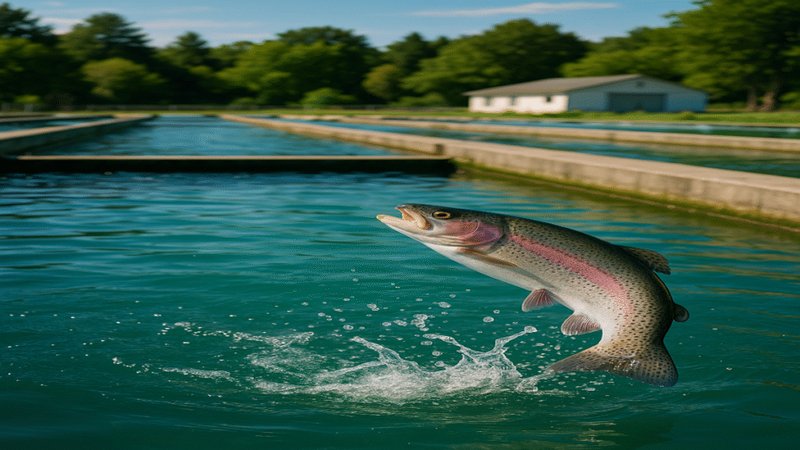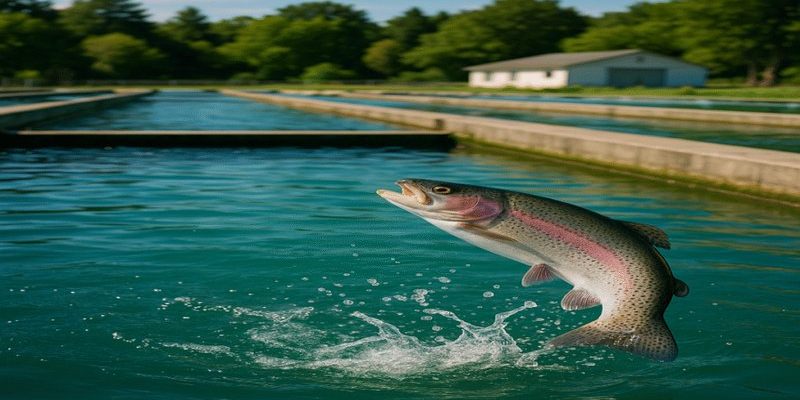
So, is trout farming profitable? That’s a question many aspiring fish farmers ask. The answer isn’t a simple yes or no; it involves understanding the costs, potential revenue, and return on investment (ROI). In this article, we’ll dive deep into the nitty-gritty of trout farming, breaking down what you need to know before you jump in.
Understanding Trout Farming Basics
Before we get into profitability, let’s cover the basics of trout farming. Trout are freshwater fish that thrive in cool water and require specific conditions to grow healthily. There are primarily two types you might consider farming: rainbow trout and brook trout. Each has its own growing requirements and market demand, which can affect your choices.
Setting up a trout farm usually involves establishing a hatchery to breed the fish, or you can buy fingerlings from an existing hatchery. The complexity of your setup can vary greatly; some farms operate in small backyard ponds while others scale up to larger, more sophisticated systems with tanks and filtration.
Thinking about starting your own farm? It helps to start small and gradually expand as you learn the ins and outs of raising trout. The initial investment can be significant, but with proper management, it can pay off.
The Costs Involved in Trout Farming
Let’s get into the numbers. Starting a trout farm involves various costs that can add up quickly. Here’s a breakdown of some initial and ongoing expenses you might encounter:
- Land and Water Source: You’ll need a suitable area for your farm, including a fresh water supply, which might require digging ponds or investing in tanks.
- Fish Stock: Buying fingerlings can range from $0.10 to $0.50 each, depending on the size and species you choose.
- Feeding and Care: Trout need a balanced diet to grow, so factor in the cost of feed and health supplements. This could cost around $1,000 annually for a small operation.
- Equipment and Maintenance: This includes tanks, aerators, and filters. Setting up a complete system can run anywhere from $10,000 to $100,000 based on scale.
- Labor: If you plan on scaling beyond a hobby, consider labor costs for daily maintenance.
Overall, it’s estimated that starting a small trout farm can cost anywhere from $5,000 up to $200,000, depending on the scale and location.
Calculating Potential Revenue from Trout Farming
Now that we’ve discussed the costs, let’s flip the coin and look at potential revenue. You might be wondering how much money you can expect to make from trout farming. The numbers can vary, but they’re certainly encouraging if managed well.
On average, each trout can sell for between $2 to $8, depending on the market and the size of the fish. If you’re growing 1,000 fish, that could translate to anywhere from $2,000 to $8,000 in revenue.
However, it’s essential to factor in your growth cycles. Trout typically take around 6 to 18 months to reach harvest size, which means you should plan your stocking and sales accordingly. For a well-managed farm, you could expect around 2 to 3 harvests per year, boosting your earnings significantly.
Also, consider direct sales to restaurants and markets. Building relationships with local chefs or fishmongers could increase your profit margins, as you can charge more for fresh, locally sourced fish.
Estimating Your Return on Investment (ROI)
Now that we’ve discussed costs and potential revenue, let’s dive into ROI. Understanding your return on investment is crucial, as it helps you assess how profitable your trout farming venture can be.
To calculate ROI, you can use this simple formula:
ROI = (Net Profit / Total Investment) x 100
Let’s say you invest $20,000 into your trout farm. If your annual net profit (after all expenses) amounts to $10,000, your ROI would be:
ROI = ($10,000 / $20,000) x 100 = 50%
A 50% ROI is generally considered successful in farming. Keep in mind, though, that it may take time to reach that level, especially in the early stages as you’re still learning the ropes and investing in the farm’s growth.
Common Challenges in Trout Farming
Like any business, trout farming comes with its set of challenges. Understanding these can help you better prepare and increase your chances of success.
First off, water quality is crucial. Trout thrive in clear, cool water. Changes in water conditions can lead to stress or disease, which can drastically impact your yield. Regular monitoring of water temperature, pH, and dissolved oxygen levels is essential.
Another challenge is disease management. Fish can become sick just like any other livestock. Being proactive—through vaccinations and proper nutrition—can help minimize health issues.
Lastly, consider the market competition. As more people become interested in trout farming, it can be harder to secure buyers or get good prices. Keeping up with market trends and having a solid marketing plan will help you maintain profitability.
Is Trout Farming Right for You?
So, is trout farming profitable? The answer largely depends on your commitment, knowledge, and management abilities. If you’re passionate about aquaculture and willing to learn, it certainly can be a rewarding venture.
If you’re still on the fence, consider starting small. Participate in local aquaculture training programs, visit existing farms, or even volunteer to gain hands-on experience. This can help you better understand what you’re getting into and give you the confidence to move forward.
Trout farming can be a profitable venture if approached thoughtfully. Though it requires careful planning, investment, and ongoing management, the rewards can be significant. Understanding the costs and potential returns is crucial as you consider making this jump into aquaculture.
With the right knowledge and strategies in place, you could find yourself swimming in success. So, if you’ve been intrigued by the idea of fish farming, now’s the time to explore the possibilities and maybe even take the plunge!

